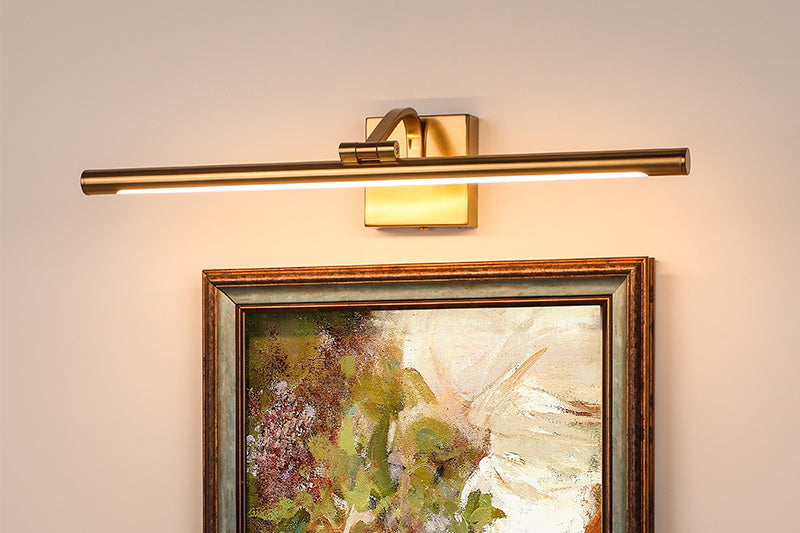Here are some factors to consider before purchasing picture lights:
- What Size Picture Light Do I Need?
- when taking a picture where should the light be
- Why led picture light
To choose the ideal light size for you, simply follow these three easy steps. Use the sizing table below for best results.
Calculate the width of the artwork. Include it in the frame if it's framed.
You might need to choose a slightly larger size to fully cover the piece if you are using a light with a narrow, small profile.If the artwork is exceptionally tall, you might want to use a picture light that extends further from the wall, allowing the light to cover the entire piece.
|
Artwork Width
|
Approximate Light Width
|
|
8″ to 14″
|
4 1/2″
|
|
12″ to 18″
|
5 1/2″
|
|
16″ to 24″
|
7″ to 9″
|
|
18″ to 35″
|
10″ to 13″
|
|
25″ to 37″
|
14 1/2″ to 16″
|
|
38″ and up
|
30″ or use multiple lights
|
When lighting an artwork with the appropriate width, the entire surface will usually be adequately illuminated.
Purchasing Advice: Use the options in our Size menu to easily identify the necessary width-size when browsing through our selection of picture lights.

How wide should a picture light be
Although lighting in photography is not an exact science, following these general guidelines can help you make the right choice.
The general rule of thumb is to place the picture light centrally above the picture and position the pictures on the wall with their centers at eye level, or approximately five feet from the floor.
The majority of picture lights have swivelable and adjustable heads, allowing for precise direction of the light onto the image below.
Pictures in Landscape Format:Select a picture light that is between half and one-third the size of the image, excluding the frame.
Images in Portrait Format:Choose a picture light that, when the frame is removed, is approximately half the width of the image.
To maintain the proper balance, you may need to choose a slightly different size if the frame of your photo is exceptionally wide.

Why led picture light
Consider the type of bulbs used in the picture lights you are considering, once you have narrowed down your selection based on size and features. Four varieties of picture light bulbs are shown here.
1. LED Picture Lights: These models are long-lasting, energy-efficient, and produce bright light. LED picture lights have a low heat output and do not emit UV light, which can cause damage to prints, photos, and other artwork. The best LEDs for maintaining the color appearance of artwork are those with a high Color Rendering Index (CRI) of 80+.
Buying Tip: Remember to shop for LEDs based on the lumens (light output), not the amount of watts/energy used.
2. Incandescent: The warm light produced by these picture lights is perfect for artwork that features red, brown, and yellow hues.
3. Halogen: The brilliant white light produced by this type of light bulb is suitable for illuminating a wide range of colors.
4. CFLs: These light bulbs consume 75% less energy while producing the same amount of light as incandescent bulbs.
Extra Lighting Options
Using picture lighting simplifies light paintings. For the majority of artworks, they provide a charming and cozy appearance. However, since recessed lighting and track lighting can illuminate larger areas, you might want to consider using them for sculptures or very large paintings.

